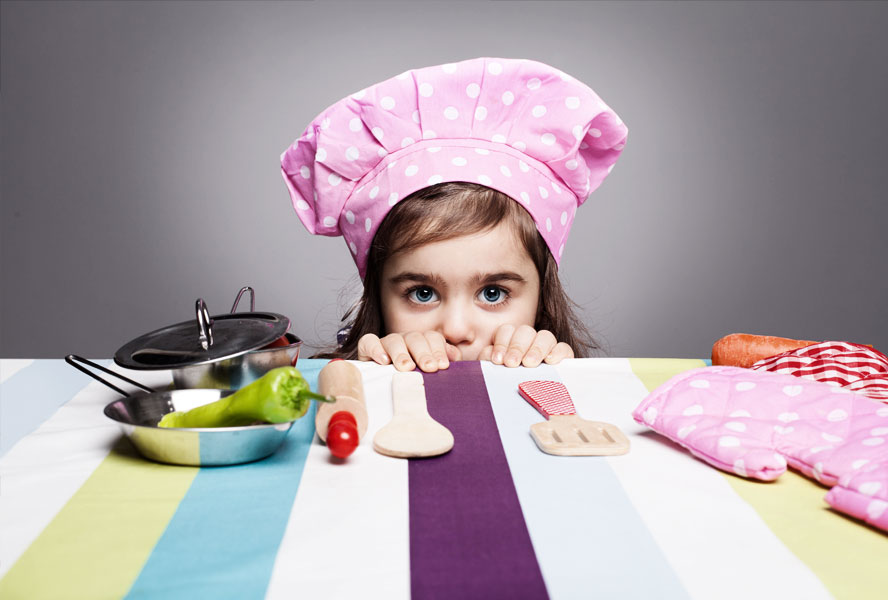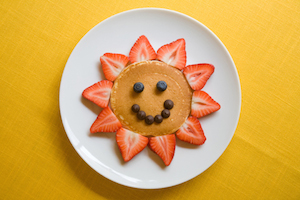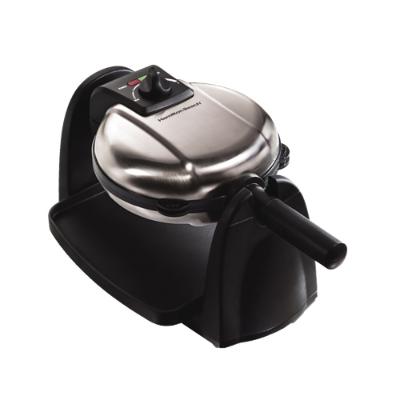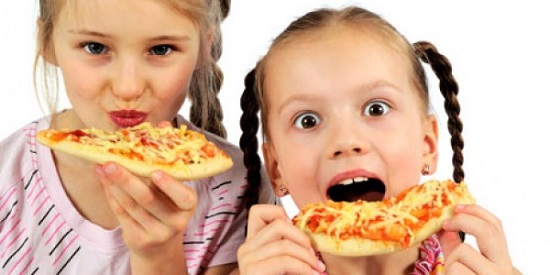
When should you start teaching your kids how to cook? Wouldn’t it be nice if your kids could make dinner, instead of you having to find the perfect meal to satisfy their picky tastes? Personally, I don’t have kids but I have two nieces and a nephew, all under the age of nine. It’s brilliant to watch them have a keen interest to see what their mom or grandmother is cooking in the kitchen. (For some of you, it’s the father or grandpa who cooks, but not in my family). The best part is seeing the little ones feel empowered by being involved in the kitchen, even if it’s a small task like pouring a cup of flour into the mixing bowl.
Teaching your kids to cook at a young age has its perks, from getting their help in the kitchen for dinner duties to knowing they will be knowledgeable to eat smart as they get older. Furthermore, it’s a perfect opportunity to bond with your children and learn about their day. You never know, by the time they become teenagers, they could be preparing dinner every night before you even get home from work or while you chill out on the couch. A parent can only dream, right?
Small steps are key for the kitchen duties but keep it exciting to maintain their interests. Most importantly, you want them to learn how to be safe in the kitchen as they learn how to cook.
I should be clear that by kids, I am referring to younger children, in elementary school basically. The key step for both safety and to help them feel excited, is to find tools that your kids can work with in the kitchen, such as colourful plastic bowls and measuring cups, or even a plastic knife. Children like to have their own things and why not get them a few kitchen tools to help them get started. Throw in a junior sized apron to make them feel that they are “playing chef.”
Here are a few things to address with your kids when you get started:
- Wash hands. Before they start in the kitchen they must wash their hands.
- Educate them about the stove. When it’s on, they should stay at least a foot away unless they have supervision. For instance, pouring scrambled eggs substance from a bowl onto the frying pan. Also many older stoves stay hot long after the stove has been turned off. Newer appliances, like this one from Samsung, have a smooth glass top that cools very quickly. Teach your child about the light on the panel that tells them that the appliance is still too hot to touch!
- Proper use of a knife. Provide them with a plastic knife for starters, but make sure they are standing at the right height to do any type of cutting. In addition, you’ll need to teach them how to grip the handle of the knife and inform them of which one they are allowed to use. For instance, you don’t want them to be starting with a butcher knife but you can hold the grip with them if you are cutting something like carrots. This will really help them get used to the feeling of cutting hard vegetables. Advise them to keep their other hand away from the blade. Watch this great video for more useful tips on teaching your kids knife skills:
 Breakfast is a great place to start in the kitchen. And every kid love pancakes, non? As you know, it’s easy to prepare and great way to empower your child to cook. Here’s a simple recipe from kidspot kitchen.
Breakfast is a great place to start in the kitchen. And every kid love pancakes, non? As you know, it’s easy to prepare and great way to empower your child to cook. Here’s a simple recipe from kidspot kitchen.
|
Ingredients:
|
Directions:
Have the main ingredients out on the table: flour, sugar, eggs, milk and butter. Kids between the ages of 3-5 are capable of measuring the ingredients. Make sure your measuring cups are ready for action and ask them to scoop a cup of flour to pour into the mixing bowl. Once all the dried ingredients are in, ask them to mix it together with a whisk. At the end, they’ll enjoy cracking an egg onto the dried ingredients.
Provide your kids with a visual goal to accomplish such as “no more lumps” or “no more dried ingredients.” This makes them focus while preparing this step of the recipe. If you feel that their whisking is getting a little messy. Take over for the final touch (and tell them they get an “A” for effort).
If your child is over five years old, it’s your discretion on whether or not you are comfortable for them to cook around the stove. With that in mind, make sure you teach them about having their distance when the stove is on. If you have kid sized kitchen gloves, educate them to wear that around a hot stove/pan.
For the sake of making pancakes, I’d recommend getting an electric griddle. It’s safe and manageable, as you can place it on the kid’s table so it’s compatible to their height. Provide them with a large spoon or ladle and have them scoop the pancake content onto the griddle. Keep in mind, that these pancakes may not come in its perfect circle shape but they are learning and having fun. Also, depending on your comfort level, you could also have your kids flip the pancakes with a spatula so that both sides are fully cooked.

More Safety tips:
- Make sure the cord isn’t tangled with other wires or dangling.
- Constantly remind children to not to touch the hot plate. Wear gloves when possible.
- Advise them to use a spatula or proper utensil around the hot plate, and not to poke anything metal like a fork or spoon that can scratch the surface.
Many families prefer waffles which can be just as fun to make. You’ll need a waffle maker, like the Hamilton Beach Belgian-Style Waffle Maker. It has a cool-touch handle, a great feature to have so your kids can safely rotate the waffles so they cook evenly.
Chopped fruit goes very well with pancakes and waffles, in addition to a generous amount of maple syrup. Your kids can learn a little about time management while cooking: as the pancakes cook or while the griddle preheats, they can prepare the delicious, healthy toppings by chopping bananas, or strawberries. Educate them about the importance of washing fruits and vegetables to clean away the dirt and bacteria.

For dinner, it’s pizza night.
Not the ordering in kind, but make your own pizza. I can just hear your kids cheering for excitement from making the dough to adding their favorite toppings. Making your own pizza is easy with the Breville Crispy Crust Pizza Maker. To start, you can gather the ingredients to make the dough—and remember your kids are already expert mixers from the experienced they gained making pancakes. Use this fast and simple recipe from Food.com.
|
Ingredients:
|
Directions
- Mix 1 cup of flour with all other ingredients.
- Gradually add 2nd cup of flour until it forms a ball. Use your hands to form and knead the dough.
- Let the dough rest 10-15 minutes in a bowl covered with a dish towel or saran to keep it warm.
- Spread out onto greased pizza pan and top with your favorite toppings.
- Bake at 375 degrees for approximately 15 minutes.
The fun part of making pizza is adding the toppings (or just being generous on the cheese). You can create a pizza station with all the toppings in various bowls. While you prepare the pizza sauce and chop all the vegetables and meats. Your child could start grating the cheese. For their little hands, they’ll like find it easier to use this OXO Good Grips Rotary Cheese Grater. It’ll also avoid their hands from getting cut on the little blades. Depending on how much cheese you need, it’s possible that you’ll have to add a little assistance.
Give each child their ball of dough and with a rolling pin show them how to flatten it into a pizza base. Add oil and tomato sauce onto the dough and then let your kids be free to add the toppings of their desire. Hopefully there is a good ratio between veggies and meats to cheese. Place it into pizza maker and let the countdown begin.
Providing your kids with the basic skills of cooking while being safe in the kitchen, will lead them to a love of being in the kitchen. Who knows they could become an expert chef or an excellent sous-chef for you when you prepare the next meal.



